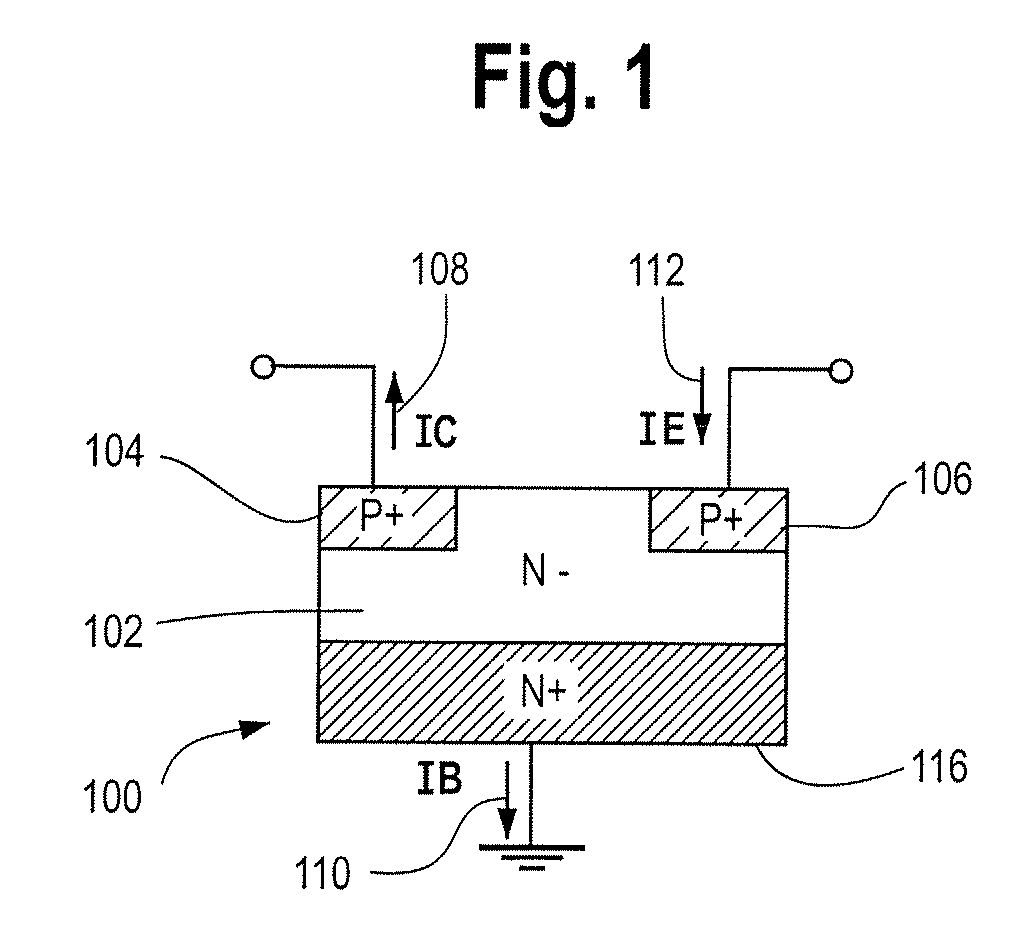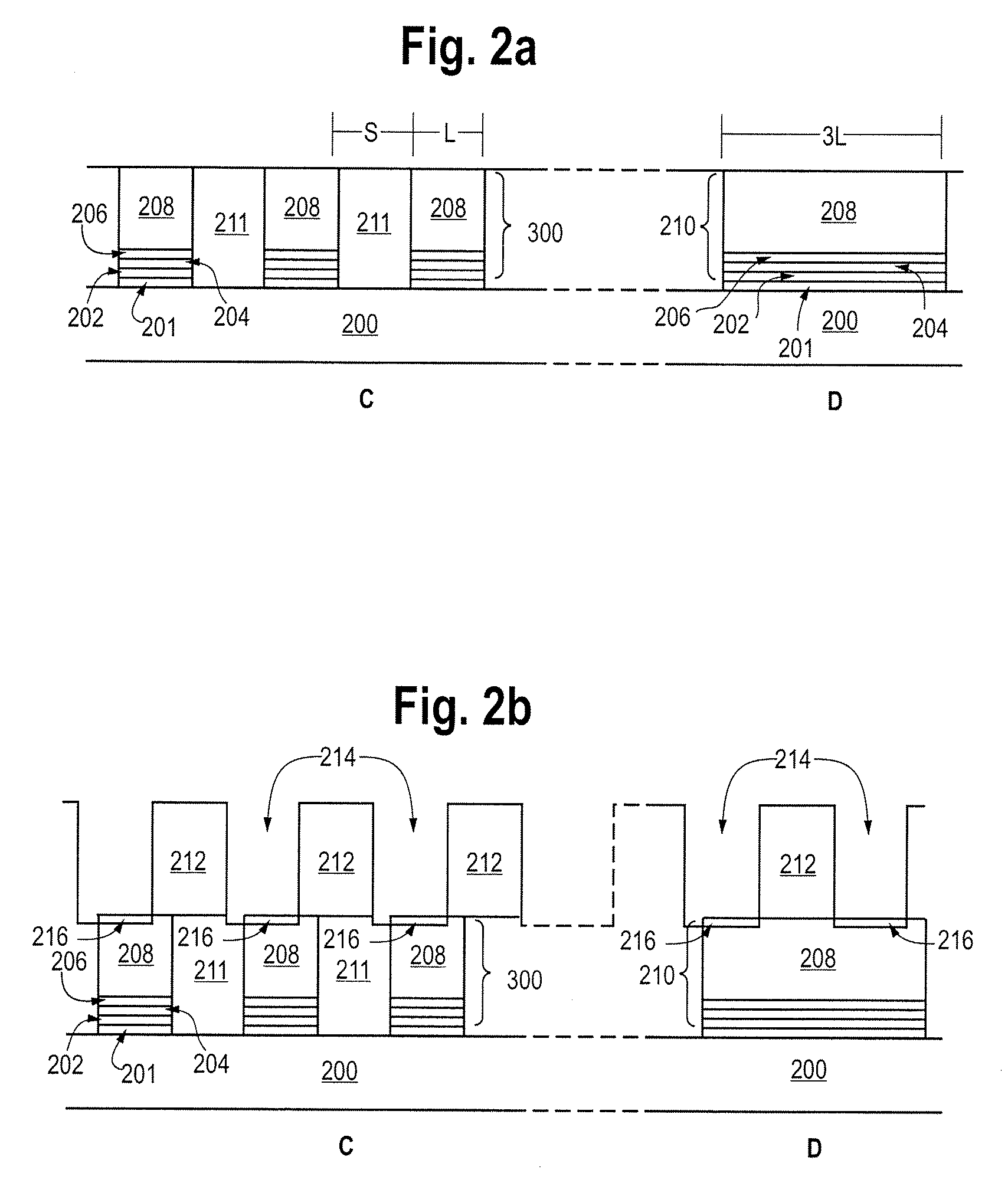Method for forming polycrystalline thin film bipolar transistors
a technology of bipolar transistors and polysilicon films, which is applied in the direction of electrical equipment, semiconductor devices, instruments, etc., can solve the problems of low carrier lifetime and high defect densities of polysilicon films
- Summary
- Abstract
- Description
- Claims
- Application Information
AI Technical Summary
Benefits of technology
Problems solved by technology
Method used
Image
Examples
Embodiment Construction
[0005]The present invention is defined by the following claims, and nothing in this section should be taken as a limitation on those claims.
[0006]In one embodiment, the invention is directed to a method of forming a bipolar transistor comprising the steps of: depositing a layer of amorphous semiconductor material comprising silicon, germanium or silicon-germanium above a substrate; depositing a metal in contact with the amorphous semiconductor material; annealing to react the metal with the amorphous semiconductor material to form a crystallization template layer comprising metal silicide, metal germanide or metal silicide-germanide and to crystallize the layer of semiconductor material. The crystallization template layer preferably comprises titanium silicide, germanide or silicide-germanide.
[0007]Another aspect of the invention provides for a method for making a thin film bipolar transistor comprising the steps of: depositing a layer of amorphous silicon above a substrate; doping ...
PUM
| Property | Measurement | Unit |
|---|---|---|
| size | aaaaa | aaaaa |
| diameter | aaaaa | aaaaa |
| diameter | aaaaa | aaaaa |
Abstract
Description
Claims
Application Information
 Login to View More
Login to View More - R&D
- Intellectual Property
- Life Sciences
- Materials
- Tech Scout
- Unparalleled Data Quality
- Higher Quality Content
- 60% Fewer Hallucinations
Browse by: Latest US Patents, China's latest patents, Technical Efficacy Thesaurus, Application Domain, Technology Topic, Popular Technical Reports.
© 2025 PatSnap. All rights reserved.Legal|Privacy policy|Modern Slavery Act Transparency Statement|Sitemap|About US| Contact US: help@patsnap.com



